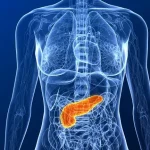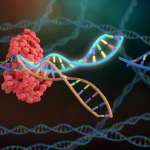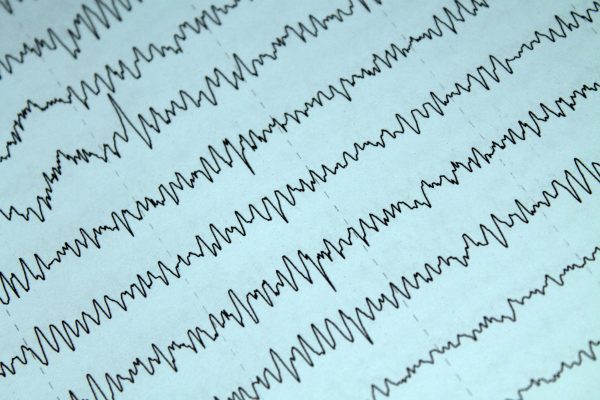by: Sarah Rockwood
Parents provide much more than food on the table, a roof to live under, and the occasional time-out. They contribute the genetic framework and environmental upbringing that shapes each one of us–the combination of nature and nurture that shapes us into unique individuals. These intergenerational effects determine a myriad of phenotypes, from skin color to food preferences to disease predispositions. A recent study from the University of California, San Francisco may have added another trait to this list: emotional circuitry. Specifically, researchers at UCSF found a strong pattern of transmission of emotional response similarity from mother to daughter, more so than any other familial connection. A robust association between mother and daughter in depression has been recognized for many decades, but little research has been done on the neural basis of this observation. This recent study at UCSF found a significant positive correlation in gray matter volume between mothers and daughters gray in the corticolimbic area of the brain, which is known to be involved in aspects of mood and emotional regulation. The results of this study may be a landmark bridge between clinical studies on the matrilineal transmission of psychiatric diseases and animal studies on genetic expression in the brain.
The corticolimbic circuitry, including the amygdala, hippocampus, anterior cingulate cortex (ACC), and ventromedial prefrontal cortex (vmPFC), is thought to be heavily involved in emotional regulation. The sympathetic “flight or fight” response is cached in the amygdala, which is responsible for processing responses to emotional stimuli and regulating aspects of emotion. The hippocampus, which is right below the amygdala, is involved with integrating and storing emotional memory. The surrounding regions, such as the ACC and vmPFC, are highly interconnected with the hippocampus and amygdala and the complex web of interactions between these structures regulate our emotions. Dysfunction in this regulatory circuitry leads to emotional and mood disorders such as depression. Human research has shown a strong correlation in depressive symptoms between mothers and adolescent daughters, but little to none has been found between mothers and sons, suggesting a gender-specific transmission pattern in the corticolimbic pathway. Animal studies have supported this finding, as maternal gestational stress leads to a decrease in hippocampal neuron count in females, but not in males. Due to the hippocampus’s role in emotional memory and regulation, decreased size in this region results in abnormal behaviors indicative of psychopathological diseases. But how exactly do the anatomical features studied in animals contribute to the sex-specific intergenerational transmission of clinical symptoms?
Dr. Fumiko Hoeft, Ph.D., and Dr. Bun Yamagata have led a study to use neuroimaging in humans to investigate the neural basis of this transmission pattern. The study focused on thirty-five healthy families comprised of four different parent-offspring combinations: mother-daughter, mother-son, father-daughter, and father-son. Using magnetic resonance imaging (MRI) at Stanford University, they scanned every participant, looking specifically for differences in regional gray matter volume (GMV). Subcortical brain volumes are highly heritable, and dysfunction in subcortical regions is often implicated in disease, making GMV a compelling area of investigation. However, brain volume is not the only indicator of intergenerational effect, as it overlooks the functional and anatomical connectivities within the corticolimbic circuitry. Professor Yamagata believes, “a thorough investigation using different approaches potentially provides complementary information that can more accurately depict the intergenerational effects in depression.”
The study controlled for the age difference between parent and offspring and individual brain size and the scans focused on the corticolimbic circuitry. With voxelwise correlation analysis, which focuses more on specific subregions rather than the entire brain, they constructed a brain map comparing GMV correlation coefficients between the different parent-offspring groups. After running all sets of analysis, the results clearly showed a stronger positive correlation of GMV between mother and daughters than any other group, in addition to more similar corticolimbic morphology. On the brain map, the regions that showed this correlation included the amygdala, ACC, vmPFC, and hippocampus. This study suggests that if a mother has abnormalities in her corticolimbic circuitry or morphology, which are significant neurobiological markers of mood disorder, then her daughters are more likely to share similar abnormalities. Given the role of these areas in the corticolimbic circuitry, it could explain why daughters are more vulnerable to inheriting depression than sons. However, as Yamagata noted, further studies need to investigate parameters beyond gray matter volume to elucidate the mechanism underlying changes in neural connectivity. In addition, to better study the inheritance patterns of psychiatric disorders, a similar study should be performed with families exhibiting a history of psychiatric disorders.
While the actual mechanism of this inheritance is still unclear, such a significant correlation certainly has implications in how disorders such as depression should be addressed. This study is the crucial first step in an exploration of the cellular and genetic foundation of depression and other psychiatric disorders. “The neurobiological substrates for these sex biases in disease prevalence are still unknown,” said Professor Yamagata. “We, therefore, believe that understanding the intergenerational transmission of behavioral and neurobiological phenotypes is critical in elucidating the etiology of such sex-biased psychiatric diseases.” Currently, treatment options for those diagnosed with emotional disorders are very limited. With a stronger understanding of the anatomical or connectivity issues that cause such disorders, the development of new therapeutic treatments will be more informed, and thus more effective. Furthermore, such knowledge could be used to design prevention paradigms for high-risk individuals. In the case of depression, girls who have mothers with a history of depression would be more heavily screened for morphological or connectivity markers, in addition to other symptoms. These findings are a step towards powerful and targeted therapeutics, and ultimately improving the lives of those suffering from emotional disorders.






